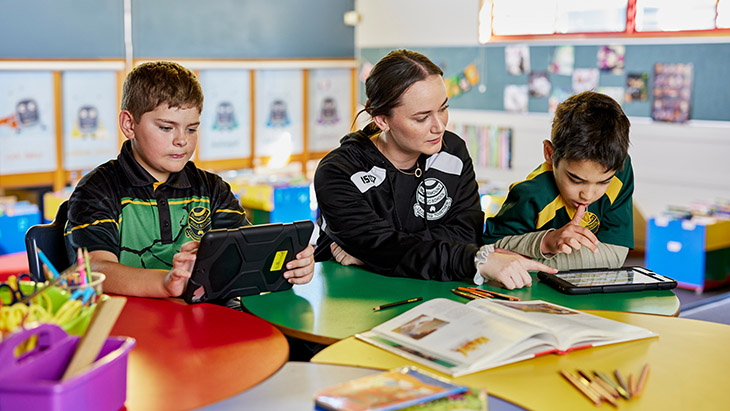Best practice tips for blind and low vision
Be proactive
Consider handing out work to students who are blind or low vision, or their families, before a class or term so they can pre-learn the material. You may contact Braille and Large Print Services to have certain materials reformatted.
Consider the learning environment
De-cluttering might help students who are blind or low vision focus. Having a simple classroom structure might help students move around the classroom safely. Consider removing unnecessary furniture and objects.
Keep things in the same place. Let a student know if you are moving something and show them where it is being moved.
Help students develop their social skills
Keep students in the main class. It is important for students to stay in the main class for most of the day, rather than with SLSOs in a different room. This helps them feel the same as other students and allows time for them to get to know other students.
Build social skills. Consider teaching students how to make friends and have a conversation. It may be helpful to discuss ways they can act or respond in common social situations (for example, joining in an activity), or to role play situations and provide effective feedback to them.
Encourage play. Students might need help to learn how to play, and they may need more play opportunities. Consider playing with students and letting them direct the play.
If they don’t join in immediately, it may help to encourage them with general comments (for example, “There are a lot of toys in the box”), specific comments (for example, “Will you play with the dolls with me?”) or by physically helping them play (for example, “Let’s race the cars together”).
Tailor teaching to students' needs
Allow more time. Some blind and low vision students may need more time to read material.
Encourage clear communication
Give clear directions. Words such as “this”, “that”, “there” and “here” might not make sense to some students who are blind or low vision, if they can’t see what you are indicating. Consider using specific words and statements to direct students, for example “Please put the box on the table”.
Develop students’ communication skills. Asking a student questions or giving detailed instructions can help students develop their communication skills. Using short and simple sentences and having predictable and repetitive routines can also be helpful.
Use short and simple sentences. Sentences and instructions are more helpful when they are short, clear, and simple.
Read aloud as you write. Consider reading aloud anything you write on a board in a slow and clear voice. Check that the student has had time to complete their note taking.
